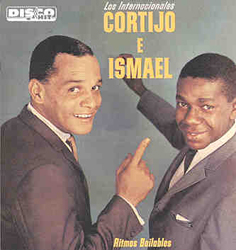
Home >> Music of the Caribbean >> Bomba
Bomba
The Evolution of Bomba: Bomba has a 300 year old history within Puerto Rico and is recognized as unique to the island.1 Brought to Puerto Rico by slaves from West Africa, bomba was originally popular among plantation slaves, which helps explain why the music was exclusive to coastal communities and communities centered on sugarcane cultivation, especially Ponce, Loíza Aldea and Mayaguez.2 As Afro-Puerto Ricans spread through out the island they carried the music with them. Historically, bomba has been associated with rebellion and resistance, as well as taking on a religious aspect. Knowledge of the dance was passed down within Afro-Puerto Rican communities and as a result knowledge of the dance is still rather restricted.3 This history explains why bomba contains many elements that are distinctly African in nature, such as the great degree of improvisation and the drums as a focal point.4 Additionally, there is evidence of Caribbean, Dutch Antilles, French Antilles and former Dutch Antilles as having contributed to the development of this genre.5 Bailes de bomba continue to be important social events, as they are often included in community gatherings.6 In the case of bomba, scholars have claimed the music and dance has even contributed to the preservation of a unified “black identity" connection between bomba music and a sense of identity is continued within the trend of migration from Puerto Rico to the United States.7 Puerto Rican immigrants in the United States preserved their identity by continuing to immerse themselves in Puerto Rican food, music and language.8 The Music/Dance: Characterized by a competition of sorts between a drummer and dancer, bomba clearly looks to highlight the rhythm of the drums and not the lyrics of the song. Bomba is typically played in 6/8 or 4/4 meter.9 The lead singer begins singing, which sets the rhythm of the song. Only after this do the drummers and dancers enter the mix. The dance is an integral part of bomba.10 One of the most important things to note is that it is not the rhythm that determines the dancers’ movements, but rather the dialogue with the drummer.11 The dance and drummer’s beat is almost entirely improvised, both trying to outdo the other in a competition. 12 Instruments: Instruments employed in bomba music include at least two drums, cua (a hollow bamboo shoot or a barrel hit with two drums sticks) and maracas.13 One bass drum controls the rhythm and is known as either buleador or tambor segundo. The second drum is known as tambor primero, subidor or primo. Bomba highlights the call and response format typically associated with African music.14 Famous Bomba Artists: Rafael Cortijo and Ismael Rivera (Cortijo y Su Combo) were two of the most important figures in bomba history, especially when one considers their success in mainstreaming bomba music as early as the 1950s.Rafael Cepeda also contributed to the spread of baile de bomba, however bomba was presented as a folkloric spectacle that did not encourage audience participation.15 In the United States, Heny Álvarez, Eugenia Ramos, Paco Rivera, Sammy Tanco, Víctor Montañez, José “Chema” Soto and Rincón Criollo, all contributed to the development and spread of the popularity of bomba music.16 Ismael Rivera and Cortijo y Su Combo would travel to Aruba and Currazo and would perform along side calypso bands at various Caribbean festivals. A great example of bomba music played by Ismael Rivera and Cortijo y Su Combo would be the song titled Volare. It has the great rhythmical bomba beats that have caused audiences from all over Latin-America to get up on their feet.17 Title: Volare Lyrics: Link to lyrics: http://lyrics.filestube.com/song/7812307caf89e60f03ea,Volare.html
Notes:
Further Reading:
|
